Elizabeth Meeke was a prolific English author, translator and children's writer, and the stepsister of Frances Burney. She wrote about 30 novels, published by the Minerva Press in the late 18th and early 19th centuries.
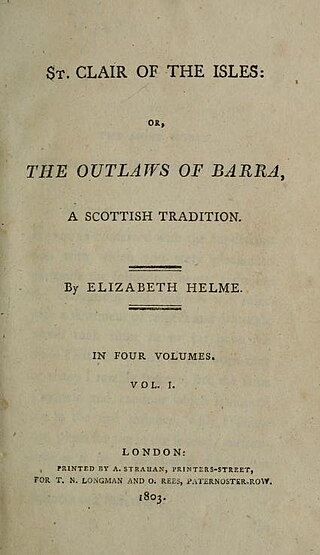
Elizabeth Helme was a prolific English novelist, educational writer, and translator active in the late 18th and early 19th centuries.
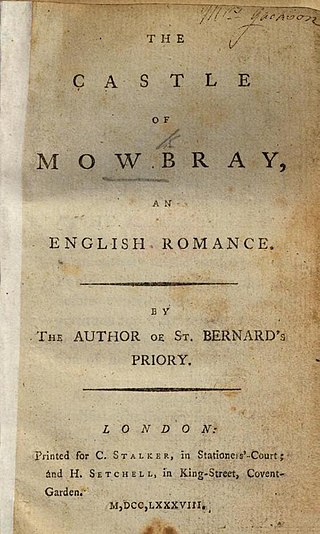
Martha Harley was the successful author of six Gothic novels.
Elizabeth Thomas [née Wolferstan] (1771–1855), novelist and poet, is an ambiguous figure. Details of her early life are missing, and her authorship of some of the works attributed to her has been contested due to the use of pseudonyms.

Selina Davenport was an English novelist, briefly married to the miscellanist and biographer Richard Alfred Davenport. Her eleven published novels have been recently described as "effective if stereotyped".

Emma Parker was an Anglo-Welsh novelist of whom very little is known, although her work was generally well-reviewed during her lifetime. Her epistolary novel Self-Deception explores the cultural and religious differences between the English and the French.
Lady Catharine Long was an English novelist and religious writer of the 19th century.
Anne Fuller was an Irish novelist in the Gothic genre. She was one of the earliest women writers of Gothic fiction.
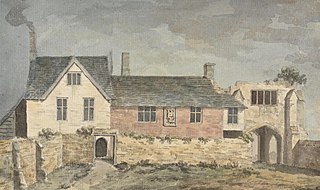
Margaret Minifie was a "a minor eighteenth-century sentimental novelist" whose career has tended to have been overshadowed by that of her sister, Susannah Gunning. A number of Minifie's works have historically been attributed to Gunning but recently, critics have sought to disentangle their two histories.

Maria Elizabeth Robinson was an author and editor. Her mother was the celebrated writer Mary Robinson, and Maria Elizabeth edited and saw Mary's unpublished works through to publication after her death.

Fanny Margaretta Holcroft (1780–1844), daughter of writer Thomas Holcroft, was a novelist, dramatist, and translator whose work aligned with the progressive tumult of the revolutionary period.

Jane Warton published poetry, essays, conduct literature, and a novel, and was a member of a prominent literary family.

Sophia Fortnum was a British Gothic novelist, and poet.
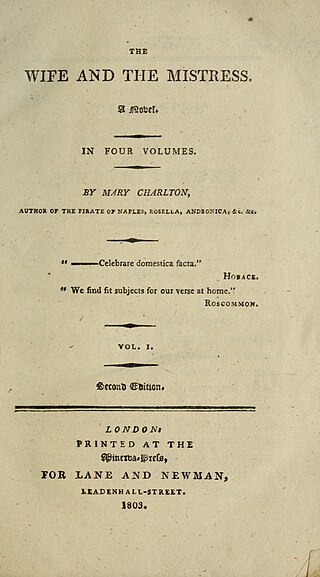
Mary Charlton, Gothic novelist and translator, was a "leading light" at the Minerva Press.

Anna Maria Mackenzie was a prolific author of popular novels active during the late eighteenth and early nineteenth centuries. She was closely associated with the Minerva Press.
Medora Gordon Byron (1782–1858) has long been accepted as the pseudonym of "Miss Byron," a Romantic-era author of either five or eight novels, though recent scholarship has complicated that identification.
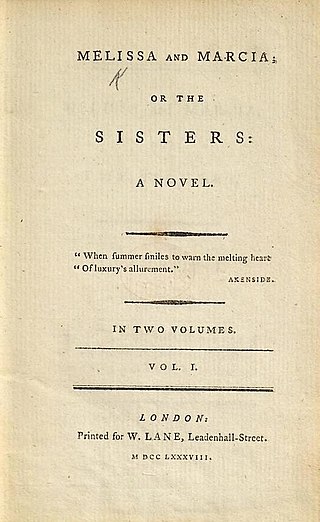
Elizabeth Hervey (1748–1820) was the author of seven novels, six of which were published and one of which exists "in a carefully-bound manuscript."
Mary Julia Young was a prolific novelist, poet, translator, and biographer, active in the Romantic period, who published the bulk of her works with market-driven publishers James Fletcher Hughes and William Lane of the Minerva Press. She is of particular interest as an example of a professional woman writer in "a market of mass novel production."










